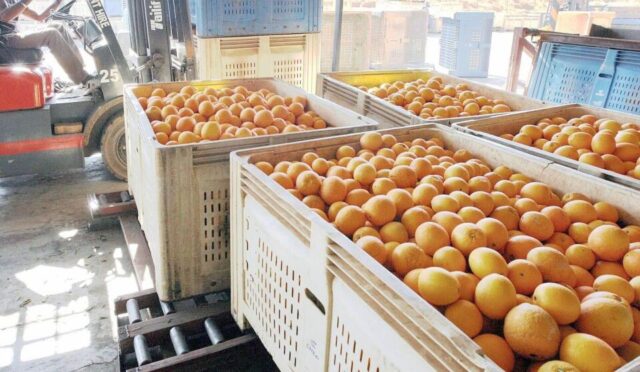South Africa’s agricultural exports amounted to $3.9 billion in the third quarter, lifting by 4% over a year, according to data from Trade Map.
SOUTH Africa’s agricultural exports amounted to $3.9 billion in the third quarter, lifting by 4% over a year, according to data from Trade Map.
Agricultural Business Chamber (Agbiz) chief economist Wandile Sihlobo said products that dominated the export list this quarter were citrus, maize, apples and pears, nuts, wine, soybeans, sugar and fruit juices.
“This solid export activity was both a function of improvement in volumes and prices, specifically of fruits. This more than offsets the effects of lower grains and oilseed prices, which have declined notably from their 2022 levels. Overall, South Africa’s agricultural exports amounted to $10.2bn in the first nine months of the year, up 1% from the same period in 2022,” he said.
Agbiz said the export activity was mainly before the intensified challenges at the South African ports. However, given that the inefficiency challenges at the ports and on railway lines were not new, the agricultural exports’ success resulted from continued collaboration between the industry and Transnet to improve logistics at the ports.
“The South African agricultural industry has established forums to continuously engage with Transnet and enhance communication about problems so that the response can be swift to drive the exports of high-value and perishable products. Still, as evidenced by the worsened logistical efficiency since the start of the fourth quarter, more work and investment are needed to improve the efficiencies.”
From a regional perspective, the continent remained the largest market for South Africa’s agricultural exports, accounting for 32% of the exports.
Asia and the Middle East were the second-largest regions, with a 31% share. The EU was the third largest region, accounting for 19% of the agricultural exports, with the Americas region at 7%. The UK was also one of the largest single markets, accounting for 6% of the exports. The remaining 5% was spread to other various regions of the world.
Regarding imports, South Africa’s agricultural imports fell 7% year per year in the third quarter to $1.8bn. As with previous quarters, products that dominated the import list were wheat, rice, palm oil, whiskeys, sunflower oil and poultry. Wheat and palm oil were the main drivers of the decline in the value of imports.
South Africa’s agricultural imports amounted to $5.3bn for the first nine months of the year, down by 7% from the same period last year.
Sihlobo said positively, South Africa had an agricultural trade surplus of $21bn in the third quarter, up 15% y/y.
“We think export earnings will likely soften this year from the 2022 record of $12.8bn. The relatively lower commodity prices and volumes in various products and the intensified logistical constraints may weigh on the export value this year.”
The organisation said that beyond these near-term challenges, South Africa’s agriculture sector was on an export market expansion mission.
“In an increasingly divided world where geopolitics are fragile, South Africa must walk a careful path so its foreign policy approach does not result in a negative approach to trade or growing protectionism by traditional trading partners.”
“The outcome of the 15th BRICS conference in agriculture also focused on the need to deepen trade within the BRICS+ countries while retaining other markets outside this grouping.
“BRICS countries collectively imported about $320bn of agricultural products from the world market in 2022. About 74% of the agricultural imports were from China, 12% from India, 8% from Russia, 4% from Brazil and 3% from South Africa.”
Paul Makube, senior agricultural economist, FNB Commercial, said the latest trade data update from Trade Map showed another impressive performance with the value of export earnings jumping by 4%. He said the increased seasonal availability from bumper harvests in horticulture and field crops underpinned this stellar performance.
“Although slightly firmer on Q2, the rand exchange rate exchange rate depreciated by 14.4% y/y in Q3 2023 thus enhancing earnings in addition to the increased volumes and better prices for some of the products,” Makube said
– BUSINESS REPORT








